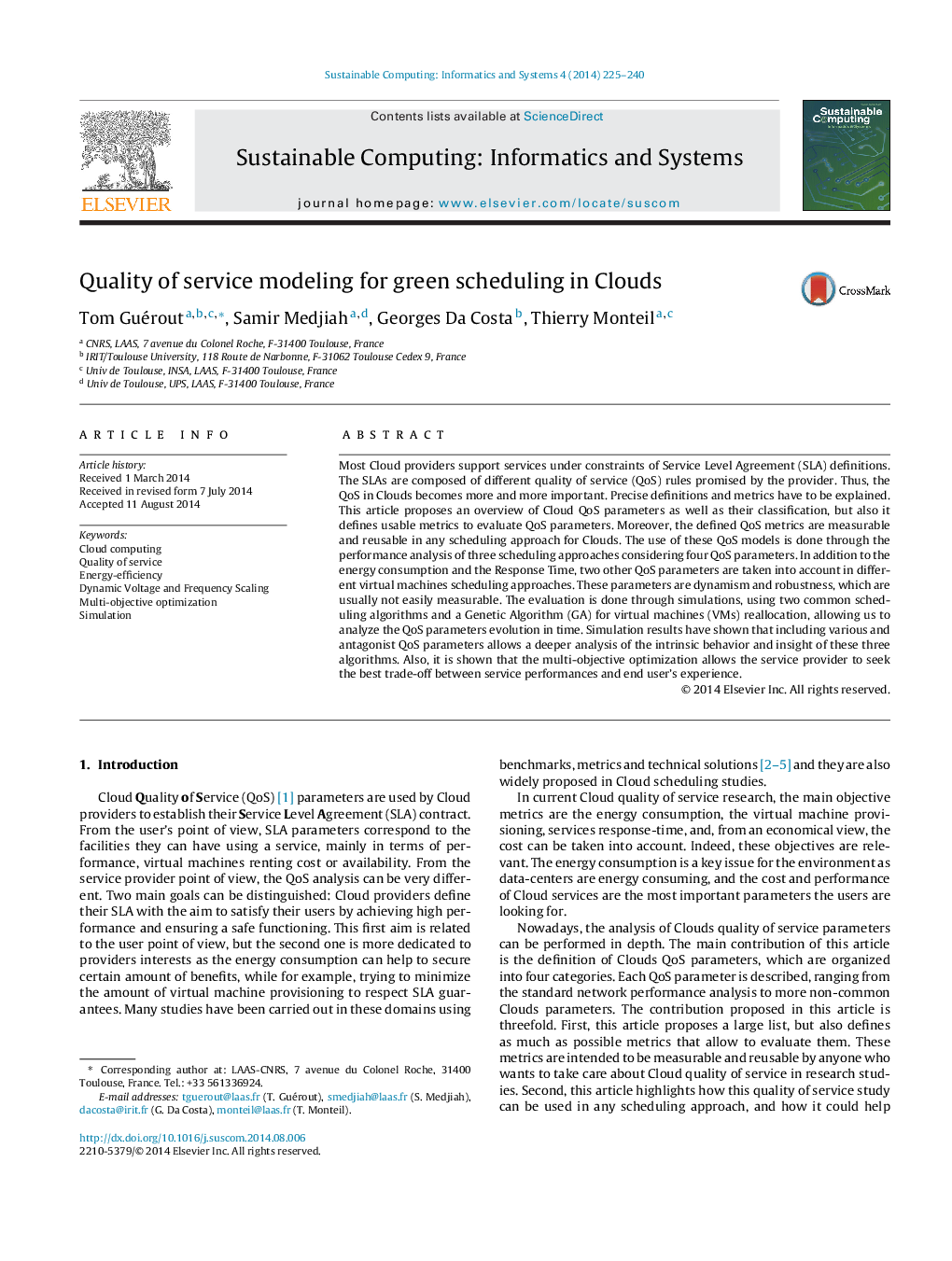| Article ID | Journal | Published Year | Pages | File Type |
|---|---|---|---|---|
| 493933 | Sustainable Computing: Informatics and Systems | 2014 | 16 Pages |
•Cloud architecture modeling.•Clouds quality of service modeling.•Explanation of how uncommon quality of service parameters can enrich Clouds scheduling.•Validation approach for Clouds scheduling, including a Genetic Algorithm.•Scheduling evaluation results and comparisons.
Most Cloud providers support services under constraints of Service Level Agreement (SLA) definitions. The SLAs are composed of different quality of service (QoS) rules promised by the provider. Thus, the QoS in Clouds becomes more and more important. Precise definitions and metrics have to be explained. This article proposes an overview of Cloud QoS parameters as well as their classification, but also it defines usable metrics to evaluate QoS parameters. Moreover, the defined QoS metrics are measurable and reusable in any scheduling approach for Clouds. The use of these QoS models is done through the performance analysis of three scheduling approaches considering four QoS parameters. In addition to the energy consumption and the Response Time, two other QoS parameters are taken into account in different virtual machines scheduling approaches. These parameters are dynamism and robustness, which are usually not easily measurable. The evaluation is done through simulations, using two common scheduling algorithms and a Genetic Algorithm (GA) for virtual machines (VMs) reallocation, allowing us to analyze the QoS parameters evolution in time. Simulation results have shown that including various and antagonist QoS parameters allows a deeper analysis of the intrinsic behavior and insight of these three algorithms. Also, it is shown that the multi-objective optimization allows the service provider to seek the best trade-off between service performances and end user's experience.
